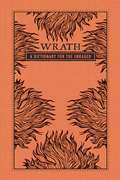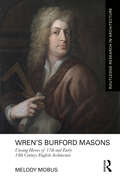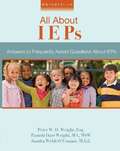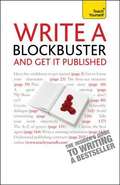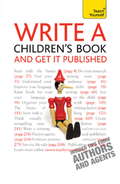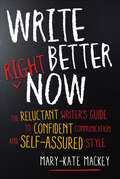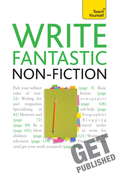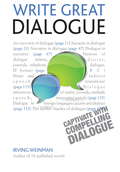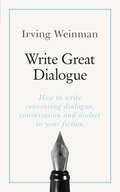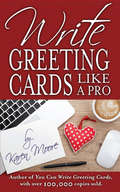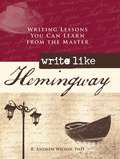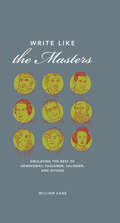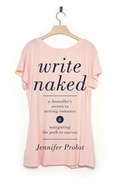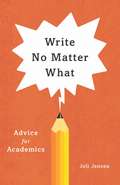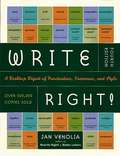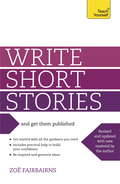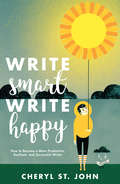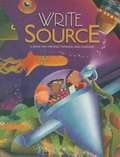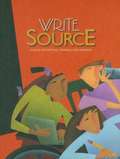- Table View
- List View
Wrath
by Adams MediaThe Seven Deadly Sins have sliced up the dictionary and taken what's theirs. No one vice is too greedy as each volume prides itself on having more than 500 entries. Word lovers will lust after these richly packaged volumes--and once you've collected all seven, you'll be the envy of all your friends.Wrath: A Dictionary for the EnragedAnger will never cause a loss of words again--as long as the Wrathful keep this reference clutched in their fists during their next fit. Speech will be their weapon as they launch a verbal assault on anyone who's wronged them.
Wrath: A Dictionary for the Enraged
by Jennifer M. WoodThe Seven Deadly Sins have sliced up the dictionary and taken what's theirs. No one vice is too greedy as each volume prides itself on having more than 500 entries. Word lovers will lust after these richly packaged volumes--and once you've collected all seven, you'll be the envy of all your friends. Wrath: A Dictionary for the Enraged Anger will never cause a loss of words again--as long as the Wrathful keep this reference clutched in their fists during their next fit. Speech will be their weapon as they launch a verbal assault on anyone who's wronged them.
Wrath: A Dictionary for the Enraged
by Media AdamsThe Seven Deadly Sins have sliced up the dictionary and taken what's theirs. No one vice is too greedy as each volume prides itself on having more than 500 entries. Word lovers will lust after these richly packaged volumes--and once you've collected all seven, you'll be the envy of all your friends.Wrath: A Dictionary for the EnragedAnger will never cause a loss of words again--as long as the Wrathful keep this reference clutched in their fists during their next fit. Speech will be their weapon as they launch a verbal assault on anyone who's wronged them.
Wren’s Burford Masons: Unsung Heroes of 17th and Early 18th Century English Architecture (Routledge Research in Architecture)
by Melody MobusThis book shows, for the first time, the indispensable role of the Burford Masons, a group of master masons from the historic quarries around Burford, Oxfordshire, in creating some of the foremost buildings of the 17th and early 18th centuries. The Burford Masons were involved in the construction of such outstanding buildings as St Paul's Cathedral, City churches, and Blenheim Palace, among many others. Whilst credit for many of these buildings generally rests with named architects, Sir Christopher Wren in particular, this book shows how reliant these designers were on their master craftsmen, sometimes involving them in the design process as their ideas evolved. The book further shows how the Burford Masons responded to the challenge of late payments, often of many years, becoming financiers in the process. It reveals how, as risk-taking businessmen, they effectively underpinned both public and private development financially, and how extraordinary success transformed their lives. The reader will learn about the vital part played in the early modern period by master craftsmen of the calibre of the Burford Masons, despite the emergence of the architect as lead designer, whose fame has hitherto overshadowed them. As a result, this book will be a compelling read for anyone interested in architectural, construction or social history.
Wrightslaw: All About IEPs
by Pamela Wright Peter W. D. Wright Sue O'ConnorWhether you are the parent of a child with special education needs, a seasoned educator, or a professional advocate, you have questions about Individualized Education Programs, (IEPs). In this comprehensive, easy to read book, you will find clear, concise answers to frequently asked questions about IEPs. Learn what the law says about IEP Teams and IEP Meetings, Parental Rights and Consent, Steps in Developing the IEP, Placement, Transition, Assistive Technology and Strategies to Resolve Disagreements.
Write A Blockbuster - And Get It Published: Teach Yourself
by Helen CornerDesigned for all those wanting to be the next Dan Brown, this introduction to writing popular fiction will be a key addition to the writer's bookshelf. Authored jointly by a literary consultant/agent and a highly successful author, it offers not simply a guide to writing a novel but an introduction to writing a plot-based, action-focused blockbuster. It covers such key practicalities as the importance of plot, pace, action, character and the different demands of such popular commercial genres as romantic fiction, thrillers and so on. For those looking to write for a living, this book provides vital information on the process, including finding an agent and making a living as a writer. NOT GOT MUCH TIME? One, five and ten-minute introductions to key principles to get you started. AUTHOR INSIGHTS Lots of instant help with common problems and quick tips for success, based on the authors' many years of experience. TEST YOURSELF Tests in the book and online to keep track of your progress. EXTEND YOUR KNOWLEDGE Extra online articles at www.teachyourself.com to give you a richer understanding of how to write a blockbuster. FIVE THINGS TO REMEMBER Quick refreshers to help you remember the key facts. TRY THIS Innovative exercises illustrate what you've learnt and how to use it.
Write A Children's Book - And Get It Published: Teach Yourself
by Lesley Pollinger Allen Frewin JoneDesigned for writers of any children's literature, be it fiction, non-fiction or faction, this popular and successful title has been fully updated and expanded to include the latest developments in the field of children's publishing. You will understand the implications of television and film projects, learn new ways of producing your work, the latest technologies and even how to self-publish, guided by two authors who are highly experienced with the genre.NOT GOT MUCH TIME?One, five and ten-minute introductions to key principles to get you started.AUTHOR INSIGHTSLots of instant help with common problems and quick tips for success, based on the authors' many years of experience.TEST YOURSELFTests in the book and online to keep track of your progress.EXTEND YOUR KNOWLEDGEExtra online articles at www.teachyourself.com to give you a richer understanding of writing for children.FIVE THINGS TO REMEMBERQuick refreshers to help you remember the key facts.TRY THISInnovative exercises illustrate what you've learnt and how to use it.
Write A Children's Book - And Get It Published: Teach Yourself
by Allen Jones Lesley PollingerDesigned for writers of any children's literature, be it fiction, non-fiction or faction, this popular and successful title has been fully updated and expanded to include the latest developments in the field of children's publishing. You will understand the implications of television and film projects, learn new ways of producing your work, the latest technologies and even how to self-publish, guided by two authors who are highly experienced with the genre. NOT GOT MUCH TIME? One, five and ten-minute introductions to key principles to get you started. AUTHOR INSIGHTS Lots of instant help with common problems and quick tips for success, based on the authors' many years of experience. TEST YOURSELF Tests in the book and online to keep track of your progress. EXTEND YOUR KNOWLEDGE Extra online articles at www.teachyourself.com to give you a richer understanding of writing for children. FIVE THINGS TO REMEMBER Quick refreshers to help you remember the key facts. TRY THIS Innovative exercises illustrate what you've learnt and how to use it.
Write Better Right Now: The Reluctant Writer's Guide to Confident Communication and Self-Assured Style
by Mary-Kate MackeyA veteran writing teacher shares techniques and exercises to help anyone who struggles with written communication create effective and engaging content.In almost any career, you must know how to write—even if it’s not part of your job description. But if you are a reluctant writer, producing even the simplest memo may be a struggle. Write Better Right Now is the springboard to get you ahead in any job, passion project, or situation that requires writing skills. No matter what you are called upon to do—blog posts, speeches, web content, press releases, or more—this step-by-step manual gives you the solid techniques you need to get the task done. Write Better Right Now works because it is:—Short: It takes a concise approach, from first thoughts to final edits, and its mix-and-match structure means you only have to read the sections you need.—Practical: It is loaded with summations, short cuts, tips, cheat sheets, and hands-on exercises.—Solution-driven: Knowing where you’ve gone wrong is half the battle. Write Better Right Now offers you the tools to identify your own problem patterns and choose the quickest and most appropriate fixes. You can improve your writing today.With straightforward guidance, Write Better Right Now is the quick read for productive people who need to create clear and crisp communication—right now.
Write Fantastic Non-fiction - and Get It Published: Teach Yourself
by Claire Gillman""Write Fantastic Non-fiction and get it Published"" is designed specifically for you, if you want to turn your idea into a book. If you're wondering where to start, this book clearly explains how to select a subject, hone your research skills, explore different genres and styles and edit your work. It does more than simply review the different genres, however - it will, crucially, help you to master the skill of assessing your own work objectively - essential for any would-be writer. With your confidence strengthened through practical tips, insights and exercises, it will also give you the crucial insider information on and how to approach a publisher or find an agent. Written by an author with a track record of helping new writers secure agents and publishing deals, it will take you from 'would-be writer' to 'writer' quickly and painlessly
Write Great Dialogue: How to write convincing dialogue, conversation and dialect in your fiction
by Irving WeinmanCommissioning editors say good dialogue is one of the first things that make a book stand out from the crowd - and similarly, that clunky direct speech is one of the first things that will send a book straight from the slushpile to the rejections bin. But while many other aspects of writing are pored over in intense detail, there have been very few books on the art of writing successful dialogue. In this practical guide for aspiring writers of all levels, Irving Weinman, himself a published writer and well-known creative writing tutor, uses case studies to help you explore how to write good dialogue, and gives you a range of fun and challenging exercises that will help you, to, to write brilliant dialogue.
Write Great Dialogue: How to write convincing dialogue, conversation and dialect in your fiction
by Irving WeinmanLEARN HOW TO WRITE CONVINCING AND COMPELLING DIALOGUE.Commissioning editors say good dialogue is one of the first things that make a book stand out from the crowd - and similarly, that clunky direct speech is one of the first things that will send a book straight from the slushpile to the rejections bin.But while many other aspects of writing are pored over in intense detail, there have been very few books on the art of writing successful dialogue. In this practical guide for aspiring writers of all levels, Irving Weinman, himself a published writer and well-known creative writing tutor, uses case studies to help you explore how to write good dialogue, and gives you a range of fun and challenging exercises that will help you to write great dialogue.ABOUT THE SERIESThe Teach Yourself Creative Writing series helps aspiring authors tell their story. Covering a range of genres from science fiction and romantic novels, to illustrated children's books and comedy, this series is packed with advice, exercises and tips for unlocking creativity and improving your writing. And because we know how daunting the blank page can be, we set up the Just Write online community at tyjustwrite, for budding authors and successful writers to connect and share.
Write Great Dialogue: Teach Yourself Ebook Epub
by Irving WeinmanCommissioning editors say good dialogue is one of the first things that make a book stand out from the crowd - and similarly, that clunky direct speech is one of the first things that will send a book straight from the slushpile to the rejections bin. But while many other aspects of writing are pored over in intense detail, there have been very few books on the art of writing successful dialogue. In this practical guide for aspiring writers of all levels, Irving Weinman, himself a published writer and well-known creative writing tutor, uses case studies to help you explore how to write good dialogue, and gives you a range of fun and challenging exercises that will help you, to, to write brilliant dialogue.
Write Greeting Cards Like a Pro
by Karen Moore"Write Greeting Cards like a Pro" is updated from the original book with additional chapters, updated market information, and current industry developments. "Write Greeting Cards like a Pro" is a helpful guide for anyone who wants to begin greeting card writing, take the online course, or for a more seasoned writer who might need more methods for creating great card concepts and sentiments. Karen&’s online course is one of the few options for writers to get one on one training with a greeting card professional.
Write Like Hemingway: Writing Lessons You Can Learn from the Master
by R. Andrew WilsonThe bad news is: You have to learn to write. The good news is: Learning to write just became easier.In this book, writers learn to write like they were born that way from one of America&’s greatest literary geniuses—Ernest Hemingway. Noted writing teacher Dr. R. Andrew Wilson calls writers to an adventure in writing Hemingway himself would love. Along the way they discover what really makes him a Great Writer, and how they can apply those lessons in voice, character, setting, and more to enhance their own writing. Whether agonizing over style, perfecting prose, or puzzling out plot, student writers find the answers they need to write their own masterworks. They&’ll also benefit from Papa&’s advice to beginning writers, comments on the work of other great authors, and daily writing habits. In this enlightening and informative book, writers find the mentor they need to master the art of writing.
Write Like the Masters: Emulating the Best of Hemingway, Faulkner, Salinger, and Others
by William CaneWant To Find Your Voice? Learn from the Best. Time and time again you've been told to find your own unique writing style, as if it were as simple as pulling it out of thin air. But finding your voice isn't easy, so where better to look than to the greatest writers of our time?Write Like the Masters analyzes the writing styles of twenty-one great novelists, including Charles Dickens, Edith Wharton, Franz Kafka, Flannery O'Connor, and Ray Bradbury. This fascinating and insightful guide shows you how to imitate the masters of literature and, in the process, learn advanced writing secrets to fire up your own work.You'll discover:Herman Melville's secrets for creating characters as memorable as Captain AhabHow to master point of view with techniques from Fyodor DostoeveskyWays to pick up the pace by keeping your sentences lean like Ernest HemingwayThe importance of sensual details from James Bond creator Ian FlemingHow to add suspense to your story by following the lead of the master of horror, Stephen KingWhether you're working on a unique voice for your next novel or you're a composition student toying with different styles, this guide will help you gain insight into the work of the masters through the rhetorical technique of imitation. Filled with practical, easy-to-apply advice, Write Like the Masters is your key to understanding and using the proven techniques of history's greatest authors.
Write Naked: A Bestseller's Secrets to Writing Romance & Navigating the Path to Success
by Jennifer ProbstLearn how to transform your passion for writing into a career. New York Times best-selling author Jennifer Probst reveals her pathway to success, from struggling as a new writer to signing a seven-figure deal. Write Naked intermingles personal essays on craft with down-to-earth advice on writing romance in the digital age. Probst will teach you how to:Commit to your current work-in-progress, get focused, and complete it on scheduleReveal raw emotions and thoughts on the page to hook your readersAssemble a street team to promote and celebrate your booksOvercome writer's block with easeDevelop themes that tie together your books and seriesWrite the most difficult elements of romance--including sex scenes--with skill and styleRegardless of the genre, every novelist faces a difficult task. Creating authentic characters and an engaging plot are challenging enough. But attempting to break into the hotter-than-ever romance genre, which is constantly flooded with new titles and fresh faces? It can feel impossible. This is where Probst's Write Naked comes in. To survive--and thrive--you need the help and wisdom of an expert. Written in Probst's unmistakable and honest voice, Write Naked is filled with the lessons and craft advice every writer needs in order to carve out a rewarding career.
Write No Matter What: Advice for Academics (Chicago Guides To Writing, Editing, And Publishing Ser.)
by Joli JensenWith growing academic responsibilities, family commitments, and inboxes, scholars are struggling to fulfill their writing goals. A finished book—or even steady journal articles—may seem like an impossible dream. But, as Joli Jensen proves, it really is possible to write happily and productively in academe. Jensen begins by busting the myth that universities are supportive writing environments. She points out that academia, an arena dedicated to scholarship, offers pressures that actually prevent scholarly writing. She shows how to acknowledge these less-than-ideal conditions, and how to keep these circumstances from draining writing time and energy. Jensen introduces tools and techniques that encourage frequent, low-stress writing. She points out common ways writers stall and offers workarounds that maintain productivity. Her focus is not on content, but on how to overcome whatever stands in the way of academic writing.Write No Matter What draws on popular and scholarly insights into the writing process and stems from Jensen’s experience designing and directing a faculty writing program. With more than three decades as an academic writer, Jensen knows what really helps and hinders the scholarly writing process for scholars in the humanities, social sciences,and sciences. Cut down the academic sword of Damocles, Jensen advises. Learn how to write often and effectively, without pressure or shame. With her encouragement, writers of all levels will find ways to create the writing support they need and deserve.
Write Right!
by Jan VenoliaIn this age of electronic correspondence and self-produced documents, we need a useful and reliable writing guide more than ever. WRITE RIGHT! covers the essentials of good writing in a concise and easy-to-follow format. The new edition of this classic handbook takes you through the entire writing process, from understanding the parts of speech to constructing a correct sentence to fine-tuning the mechanics. And with clever drawings and amusing quotations to illustrate its points, WRITE RIGHT! shows that language can be fun as well as an effective communication tool. Whether it'¬?s used to find a quick answer to a nagging question or to develop stronger writing skills, this handy reference is the ideal resource for writers of all levels. Ä¢ Previous editions have sold over 500,000 copies. Ä¢ Includes a resource section with a list of helpful websites and a glossary to quickly define difficult terms.From the Trade Paperback edition.
Write Short Stories and Get Them Published: Teach Yourself
by Zoe FairbairnsWritten by one of the country's leading experts on the short story, this book is ideal if you want to write creatively in a genre that is increasingly attracting attention from publishers, and which offers plenty of competition and festival opportunities for you to showcase your work.This new edition includes uptodate material on web resources and outlets and provides new information on self-publishing. In addition it discusses genres such as micro-fiction, and throughout is fully updated with new resources, events, slams and competitions.It will help unlock your imagination and creativity, and to discover stories you didn't know you had. It will help you to observe the world around you more sharply, as well as to structure, shape and polish your story. It is full of practical exercises that will both inspire imagination and refine skills, and confidence-building suggestions and hints.
Write Short Stories and Get Them Published: Your practical guide to writing compelling short fiction
by Zoe FairbairnsLEARN HOW TO WRITE WONDERFUL AND VARIED SHORT STORIES AND SHARE THEM WITH THE WORLD.Written by one of the country's leading experts on the short story, this book is ideal if you want to write creatively in a genre that is increasingly attracting attention from publishers, and which offers plenty of competition and festival opportunities for you to showcase your work.This new edition includes uptodate material on web resources and outlets and provides new information on self-publishing. In addition it discusses genres such as micro-fiction, and throughout is fully updated with new resources, events, slams and competitions.It will help unlock your imagination and creativity, and to discover stories you didn't know you had. It will help you to observe the world around you more sharply, as well as to structure, shape and polish your story. It is full of practical exercises that will both inspire imagination and refine skills, and confidence-building suggestions and hints.
Write Smart, Write Happy: How to Become a More Productive, Resilient and Successful Writer
by Cheryl St. JohnVanquish Your Writing Doubts & ObstaclesWriting is a vulnerable occupation; it is both personal and intimate. The act of writing, cycles of revision, and the confusing publishing industry can shatter a writer's confidence, leaving you feeling like an imposter, overcome with rejection. Survival--and success--requires commitment, honesty, courage, resilience, sacrifice, and miles and miles of heart.You have everything you need as a writer--it lies within, in the form of consistency and self-confidence. With Write Smart, Write Happy, best-selling author Cheryl St. John will help you unlock your skills, guiding you to overcome every hesitation, obstacle, form of writer's block, and procrastination habit you have. Within these pages, you'll learn to:Organize your writing life by using a planner, scheduling your yearly goals, and acknowledging career plans.Sharpen your saw by recharging your creativity, developing positive motivation, and creating healthy writing habits.Affirm your beliefs by overcoming self-doubt, learning to use affirmations, and altering your thinking.Conquer remaining fears by releasing tendencies towards perfectionism and establishing strategies for habitual success.Written with a no-nonsense attitude, St. John's "advice from the trenches" will help you take an introspective look at your own writing habits and life. Through examples and inspiration from writers who struggled with--and overcame--rejection and reservations, discover the path towards writing smarter and happier today.
Write Source: A Book For Writing, Thinking, And Learning
by Dave Kemper Verne Meyer Chris Krenzke Pattrick SebranekMechanics, usage, and grammar are keystones of good writing.
Write Source: A Book For Writing, Thinking, and Learning
by Dave Kemper Patrick Sebranek Verne Meyer Chris Krenzke Great Source Education Group StaffThis powerful classroom toolkit provides a variety of additional resources to help you make the most of the Write Source program:
Write Source: A Book for Writing, Thinking, and Learning
by Dave Kemper Patrick Sebranek Verne Meyer Chris KrenzkeThis powerful classroom toolkit provides a variety of additional resources to help you make the most of the Write Source program: - SkillsBook Practice for essential mechanics, usage, and grammar skills (SkillsBook Teacher's Edition also included.)- Assessment Book Copymasters for a pretest, interim tests, and posttests to help prepare students for stare assessments- Overhead Transparencies Graphic organizers, assessment rubrics, and benchmark papers for whole-class instruction- Interactive Writing Skills CD-ROM Animated grammar lessons, engaging, interactive activities, and printable and e-mailable reports- Daily Language Workouts Quick 5-to-10 minute activities in mechanics, usage, grammar, and writing.
